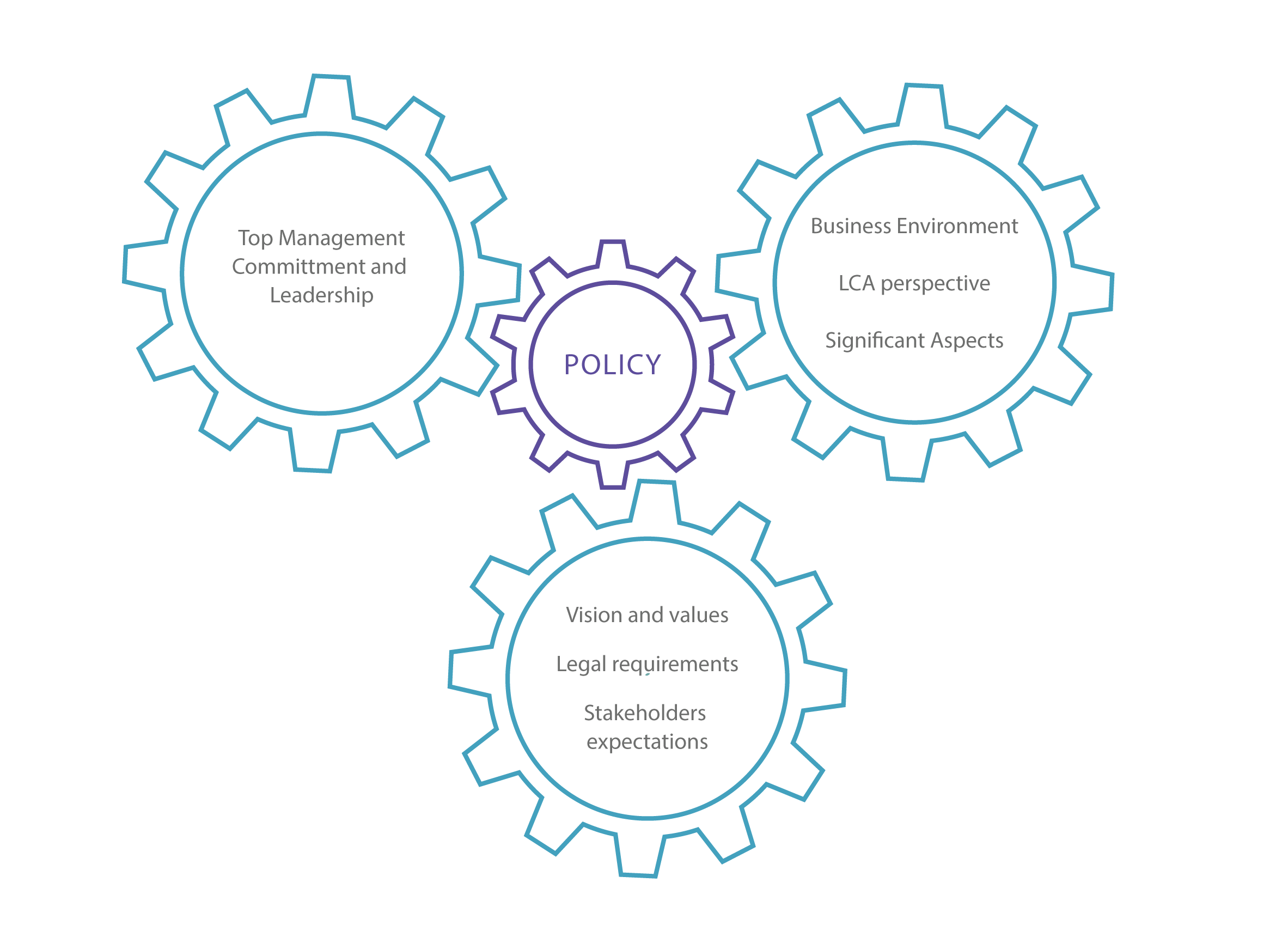Step 1.2 – scoping and policy
How to define and communicate a company’s commitment to resource efficiency.
The commitment of top management to resource efficiency is essential to initiate changes in the company’s goals and visions and to influence and define its overall performance. This commitment should be communicated to the company staff at the beginning of the TEST project and possibly to its external stakeholders as well.
If the company already has a formalized policy document, the latter can be amended to integrate specific resource efficiency objectives. If there is no such policy document, it is recommended that top management adopts at least a brief policy statement at this stage to let company staff know about top management’s commitment to resource efficiency.

ACTION TABLE ►
INPUTS
- Initial Screening report
- Legal requirements
- Stakeholders’ expectations
- Company strategy
- Life Cycle / Circular Economy Perspectives
PROCESS
- Meeting with top management to define objectives, list commitments and review life cycle / circular economy perspectives.
- Interviews with stakeholders (internal/external)
- Drafting policy statement
- Communicating policy internally (and eventually externally)
OUTPUTS
- Commitment of top management
- Policy statement
- Enterprise staff informed
TIPS ►
- Sometimes it can be difficult to convince top management to formally introduce RECP into the company’s policy at this early stage. In these cases, it can be more effective to do so by the end of the TEST planning phase, once the resource efficiency measures are identified.
- To be effective, a policy statement should clearly reference resource efficiency, cleaner production, and energy efficiency objectives, as well as significant environmental aspects and significant energy uses. A stakeholder analysis or a life cycle indicative review can help in deciding if significant environmental aspects within the life cycle should be considered as well.
- Information on existing grants and funding programmes for resource efficiency investments and environmental compliance are leverage points for top management commitment and can be presented during the Initial Screening.
- The integration of the social values and expectations of external stakeholders in the policy development process requires a consultation process (interviews) that could be challenging at this early stage. If this is the case, it can be postponed to the end of the TEST project. The same is valid for the integration of Life Cycle / Circular Economy perspectives.
- Whether in the form of a new or modified policy statement or in some other way, communicating top management’s commitment to resource efficiency generally and the TEST project in particular to all employees is essential to the success of the project.